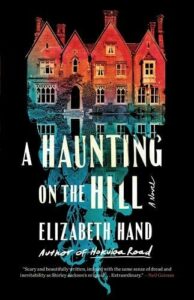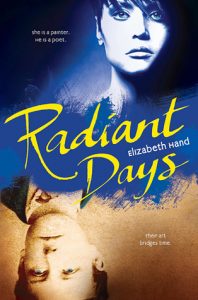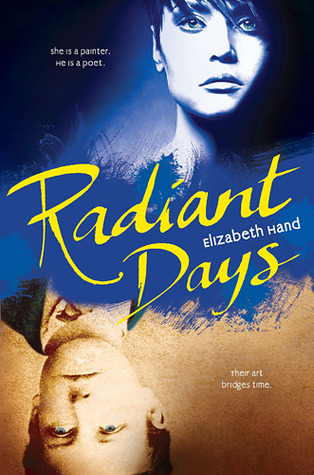Buy this from Bookshop.org to support local bookstores and the Lesbrary!
To say I went into this with high expectations would be an understatement. As soon as I heard there was an official sapphic The Haunting of Hill House sequel coming out, it became my most anticipated book release of the year. I am firmly in the camp that believes the original Hill House book is queer and have been arguing that for the past decade, so I’m happy that we now have both the Haunting of Hill House TV reimagining, which has a queer woman main character, and this official sequel, where three of the four main characters are queer.
As someone who loved the original, I came into this not sure how a sequel could live up to it, and obviously it’s impossible for another author to be Shirley Jackson, but Elizabeth Hand’s style and themes felt complementary to Shirley Jackson’s in a satisfying way. There are nods and references to the original, but this stands as its own story—I definitely don’t think you have to read the original to pick this one up.
We’re following Holly, who is a playwright who has been making ends meet as a teacher, but just got a $10,000 for her new, witchy play. She has taken the fall semester off to work on it, and when she stumbled on Hill House, she instantly decides this is the place she needs to write it. Her girlfriend, Nisa, is contributing the music, and she has the two main actors cast: her friend Stevie, and the aging star Amanda.
This is exactly what I want from a haunted house story: it begins atmospheric and foreboding, with each individual event able to be shrugged off, like a hare falling through the chimney or an image of something in the woods or a small, hidden door that seems to call to Stevie…
In some ways, Holly’s plan seems to work. When she finally convinces the owner of the dilapidated mansion to rent it to them for a few weeks, they seem to be making great strides in the play. Everything is clicking together, and their performances are stunning. Meanwhile, though, all the little annoyances they have with each other and the secrets they’re keeping seem impossible to keep buttoned down. Amanda is paranoid that they’re all judging her. Nisa has been sleeping with Stevie and Holly doesn’t know. Despite the problems, despite the strange tricks the house plays, Holly is determined to have them complete this project and bring her dream to fruition. Then the snow begins to fall, stranding them there, and everything comes to a head…
One interesting aspect to this is that each of the main characters is kind of insufferable. They’re selfish, all trying to manipulate each other to gain more credit or stage time. They can be cruel. They’re hiding things: they all have things they’ve done in their pasts that are nothing to be proud of. But they’re also such interesting characters, especially in how their personalities clash and play off each other. While in the original, I really felt for Eleanor, I didn’t have one character I was necessarily rooting for—Stevie comes closest, but I don’t feel like he is as much of a main character as Holly and Nisa are. That didn’t take away from my enjoyment, though: I still was invested in what would happen to them all.
While this takes place in the present day and it’s a different writer, I think it captures the tone and feel of the original well. My expectations were high going in, but this creepy gothic haunted house story was able to live up to them.
One quick post script: this book has a lot of songs in it. They’re sung in the audiobook. That can be a plus or a minus of that format, depending on who you are. Either way, I recommend looking on YouTube for “Hares On the Mountain” so you can hear the folk song that comes up several times in this story.
Content warnings for cheating bisexual characters and for discussion of child sexual assault and grooming.



